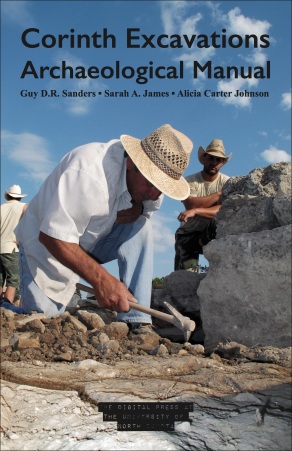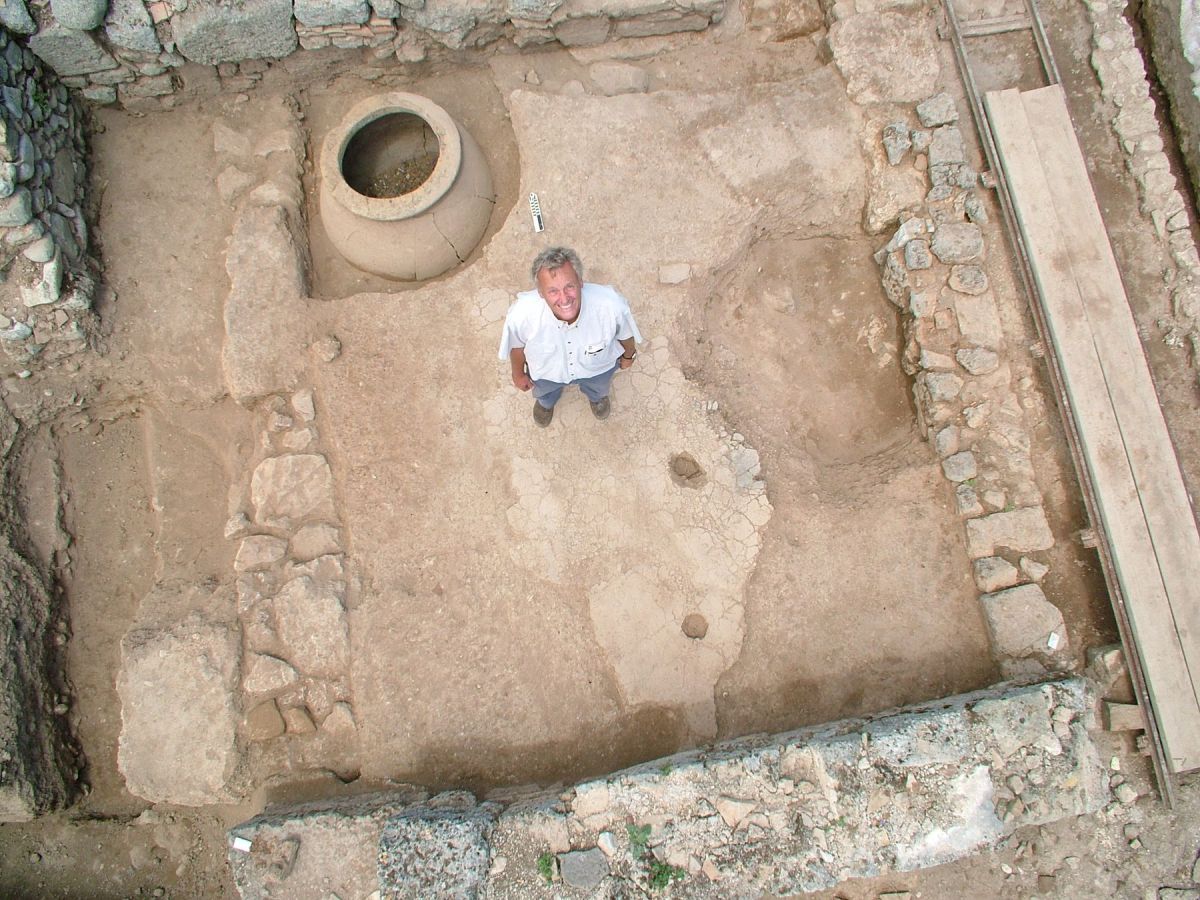Guy D.R. Sanders, Sarah A. James, Alicia Carter Johnson, Corinth Excavations Archaeological Manual. Grand Forks, ND: The Digital Press at the University of North Dakota, 2017.
https://doi.org/10.31356/dpb009
Forms (free) | Media Packet | Other Archaeological Manuals
“The publication of the Corinth Excavation Manual offers us a unique view into real-life archaeological practice on one of the most important Classical sites in the Mediterranean.” Adam Rabinowitz, Associate Professor and Assistant Director, Institute of Classical Archaeology, University of Texas, Austin
 The Corinth Excavations Archaeological Manual is the first major field manual published from an American excavation in Greece and among a very small number of manuals published from the Eastern Mediterranean in the last generation. The appearance of this book is timely, however, as there is a growing interest in field methods and the history of excavation practices throughout the discipline of archaeology. Moreover, Corinth Excavations has long held a special place in American archaeology in Greece as the primary training excavation for graduate students associated with the American School of Classical Studies at Athens. As a result, the field manual has had a particular influence among American excavators and projects in Greece, among Mediterranean archaeologists, and in archaeology classrooms.
The Corinth Excavations Archaeological Manual is the first major field manual published from an American excavation in Greece and among a very small number of manuals published from the Eastern Mediterranean in the last generation. The appearance of this book is timely, however, as there is a growing interest in field methods and the history of excavation practices throughout the discipline of archaeology. Moreover, Corinth Excavations has long held a special place in American archaeology in Greece as the primary training excavation for graduate students associated with the American School of Classical Studies at Athens. As a result, the field manual has had a particular influence among American excavators and projects in Greece, among Mediterranean archaeologists, and in archaeology classrooms.
Published as a technical field manual, an archival document, and a key statement of practice from a major excavation, the Corinth Excavations Archaeological Manual presents a guide for daily procedures at the Corinth Excavations, a complete record of documentation forms used in the field, and a practical glimpse into the functioning of a complex, major, project. The manual is a landmark text appropriate for the university student, the scholar of methodology, and the working field archaeologist.
“The Corinth manual has grown over the years into a comprehensive and authoritative guide to open-area, stratigraphic excavation, covering everything from excavation of pits, wells, and robbing trenches to the removal of deposits to inventorying objects in the museum. ” David Pettegrew, Associate Professor, Messiah College and author of The Isthmus of Corinth (2016).
All of the authors have worked on the excavations at Corinth in various capacities. This manual was developed under the directorship of Dr. Guy Sanders by former field directors Alicia Carter Johnson and Dr. Sarah James. Additional contributions come from past and present Corinth staff including assistant director Dr. Ioulia Tzonou-Herbst, architect James Herbst, conservator Nicol Anastasatou, and archaeologist Katerina Ragkou. The authors would also like to recognize the contributions of the many students from the American School of Classical Studies at Athens who offered valuable feedback on earlier versions of this manual over the past 10 years.
Download (free) | Buy | Forms (free) | Media Packet | Other Archaeological Manuals
From the authors:
From Guy Sanders, Director, Corinth Excavations.
Twenty years ago the field records were handwritten in small notebooks. Few contexts were drawn and fewer still photographed. Corinth Excavations worked in Kenyon/Wheeler trenches within an alpha-numerical grid. Navigating the notebooks, finds records and storage was a nightmare consuming inordinate amounts of time.
In 1997, the first manual was designed to begin work with an open area, single context system in the spring of 1998. Over several years, we added a relational database, digitized almost the entire Corinth Excavations archive (searchable on ascsa.net) and in 1997 initiated “born digital” recording on site and in the museum. The result is that it is now very easy to navigate the archaeological records, to identify the associated material culture and to locate where it is stored. Every context has a detailed description, relationships to other contexts and features, a drawing and at least one digital image in a standardized format using recommended language. The entire record; field reports, context sheets and associated finds, fully catalogued notable finds and images are published online within a year of creation. During the development of the manual from 1998 to the present student excavators have been instrumental in making improvements – after all, who is better qualified to suggest changes than the people who actually have to use the tool?
Probably the biggest change is in the way in which we work as a community. Where the direction and interpretation of the excavation had been strictly hierarchical, today decisions and interpretation are a discussion between the technicians who do the digging, the student recorders and the staff. Another important change is that instead of sieving sparingly, we now sieve extensively with a significant improvement in recovery of small but important finds such as coins and micro-faunal remains. The basics twenty years ago were quite solid but little thought went into site formation and the significance of the finds. Now everyone on and off site is encouraged to think about how and why contexts came into being.
The manual has helped us to access and search quality information and the recovery and open area methodology enabled us to develop better interpretations. The result are some drastic changes in the way in which we understand the site especially in its Hellenistic, Late Roman, Medieval and Early modern phases.
It is important that what purports to be a scientific endeavor lay out its methodology in some detail.
The standardization of language and format will mean that others using or adapting the manual will find it much easier to compare their record with other sites. If an excavation wants to develop their own manual, the Corinth Manual may mean that they do not need to reinvent the wheel; they will be using a tool that itself has benefitted from the experience of other manuals such as MoLAS, the Gezer manual and ultimately J. P. Droop’s Archaeological Excavation (Cambridge 1915).
The manual has already benefitted those designing projects at Thebes, Sikyon, Sparta, Mycenae, Nemea, Priniatikos Pyrgos and Molyvoti. It is also used as a text Method and Theory classes at the University of Georgia and Princeton.

Sarah James, Assistant Professor, Department of Classics, University of Colorado
This manual was many years in the making and it has evolved to incorporate many aspects of the modern Mediterranean excavation. The present book is the best and most complete version that could be achieved, a version that we hope will remain current for the next few years. This is a pivotal time in Mediterranean archaeology as conversations about technological applications outnumber those about methodology.
By publishing this manual, we are attempting to encourage discussion about what is arguably the most important part of archaeological excavation.
Manuals encourage project-wide consistency in recording practices, from the field to the museum, which facilitates the speed and efficiency of interpretation and publication of results. As a teaching tool, this manual explains the method and theory behind most aspects of an archaeological project. It is therefore useful as a handbook in both the classroom and in the field.